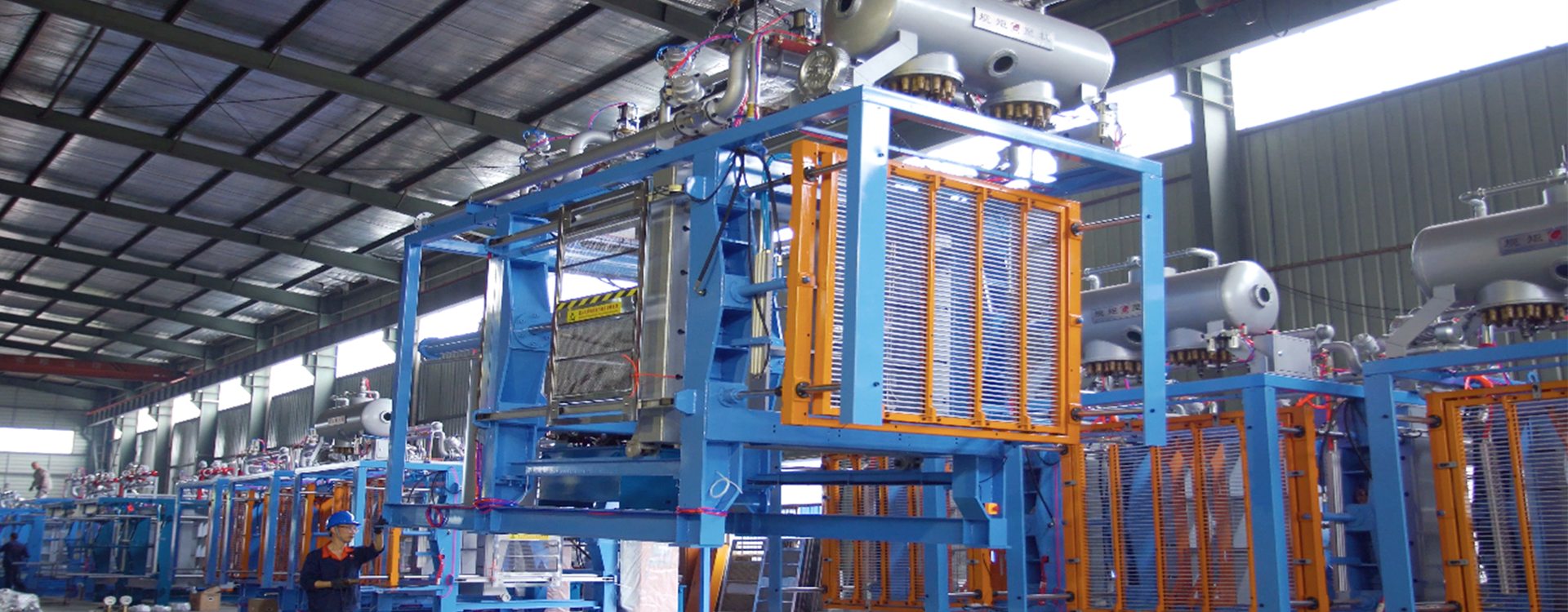EPP shape molding machine production process
The processing process of EPP molded products mainly includes data loading (pressure holding), foam molding, foam drying and shaping, inspection, packaging, etc., and can be processed into various shapes.
It is particularly pointed out that before processing EPP, it is necessary to increase the pressure inside the raw material particles through pressure loading to produce molded parts with lower density. This is because the raw materials after pressure loading can complete the production of molded parts with various densities. In addition, the load pressure can also reduce the shrinkage of the molded parts after demoulding, and the surface effect will be better.
In general, the carrying pressure is achieved by gas penetrating the outer wall of the particles. During this process, the carrying pressure can be adjusted by changing parameters such as time, pressure, and temperature. After the pressure loading process, the density of the molded product is reduced.
Detailed steps are as follows:
1. Close the mold and preheat the mold so that the surface temperature of the mold reaches the melting point of PP;
2. Feed, so that the raw materials enter the mold through the material gun.
3. Pour steam into the mold in three steps:
(1) Steam flushing: Steam flushes from top to bottom to push air out of the steam chamber and condensed water to flow out. During this process, open the upper steam inlet valve and the lower condensate drain valve.
(2) Horizontal steam: Make the steam sweep from one side of the steam chamber to the raw material, penetrate the raw material and reach the other side. At this time, close the condensate valve on one side and open the steam inlet valve. At the same time, the steam inlet valve on the opposite side is closed and the condensate water valve is opened, so that steam is ejected from the opposite direction. If there is a thin flange in the mold, it is best for the steam to pass around the flange so that the raw materials sandwiched inside the flange can also be vaporized.
(3) Pressure maintenance: After passing steam horizontally, it needs to go through a pressure maintenance or double-sided evaporation process. During this process, the steam inlet valve is opened and the condensate discharge valve is closed, so that the pressure gradually reaches the peak value.
4. Cooling
After steam is introduced, the temperature inside the mold will generally reach 140°C. In order to ensure the smooth demoulding of the product, the mold temperature must be reduced to 70°C.
5. Demold
As the internal pressure is relieved and the temperature drops to the allowable demoulding temperature, the demoulding operation can be carried out.




















